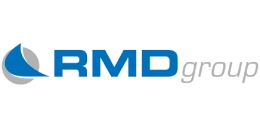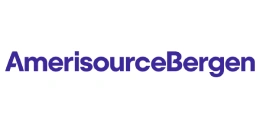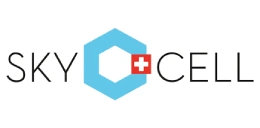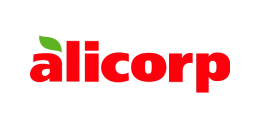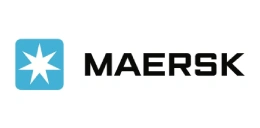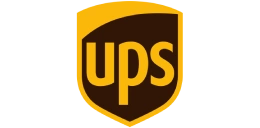Aluminium Wire Cost Model: Wire and Worth
_11zon.webp)
Aluminium wire is an essential industrial commodity commonly employed in power transmission, electrical distribution, building construction, and manufacturing processes owing to its high conductivity-to-weight ratio, resistance to corrosion, and cost advantage over copper. Produced by methods including continuous casting, rolling, and drawing, aluminum wire is available in various grades and alloys to serve the wide demands, from overhead transmission conductors and building wiring to automotive harnesses and electronic applications. Its light weight has it as a favored substitute for copper in long-distance power transmission, where less weight means less structural cost for towers and supports. Furthermore, aluminum's inherent oxidation resistance gives it toughness in outdoors and high-humidity settings, increasing its sustainability in utility and infrastructure applications. Advances in recent times have also enhanced the mechanical strength and conductivity of aluminum wires by alloying with magnesium, silicon, or other metals to expand their applications in aerospace, railways, and renewable energy. As there is an increasing focus on energy efficiency and sustainability, aluminum wire also provides savings in overall system cost by providing recyclability in addition to environmental savings. As global electrification accelerates, aluminum wire has become an indispensable material, balancing performance, affordability, and adaptability across multiple industrial sectors. The global aluminum wire market size reached USD 29.3 Billion in 2024. According to IMARC Group, the market is projected to reach USD 52.1 Billion by 2033, at a projected CAGR of 6.2% during 2025-2033. The global aluminum wire market is being propelled by several key drivers that align with industrial growth, electrification, and sustainability trends. The primary catalyst is growth in power transmission and distribution networks in developing economies of the Asia-Pacific, Africa, and Latin America, where industrialization and urbanization require effective and economical grid infrastructure. Aluminum wire, due to its light weight and lower cost compared with copper, has a significant role to play in reducing the cost of projects without loss of conductivity. Secondly, the solar and wind energy boom is driving demand, as wind farms and solar parks increasingly use aluminum conductors to feed energy onto the grid. Another major sector driving demand is the automotive industry, where electric vehicles (EVs) need lightweight wire solutions to increase efficiency and lower overall vehicle weight, leading to improved range and performance. Also, construction infrastructure development particularly smart cities and housing projects continues to boost use of aluminum wiring in buildings and low-voltage systems. In industry, aluminum wire is making inroads in electronics and aerospace because alloy developments improve strength and conductivity. Macro-economically, fluctuating copper prices are pushing manufacturers and utilities to turn towards aluminum as a cost-consistent option. In addition, sustainability priorities such as circular economy ambitions and recyclability are increasing the attractiveness of aluminum because it can be recycled without loss of properties. As a combination, these elements provide a solid growth path for the aluminum wire market to be a strategic material in future energy, mobility, and infrastructure systems.
Trending Insights on Aluminum Wire: Latest News and Developments
- In August 2025, Centure Aluminum intends to resume producing over 50,000 metric tonnes of product with a US$ 50 million investment, at its Mount Holly smelter. According to a news release, the investment would increase domestic output by 10% and generate 100 new employments. The factory will return to full output by June 30, 2026, although it is already operating at 75% capacity.
- In July 2025, the company Aluminz Corporation recently revealed a significant advancement in its goal to revolutionise aluminium recovery in North America. With the full approval of the Mount Pleasant Economic Development Corporation (MPEDC) and the Mount Pleasant City Council, the business has signed a 30-year lease and performance agreement and acquired a 155-acre site to build the first zero-landfill aluminium tolling facility in the country.
- In June 2025, Prysmian invests US$ 500 million to expand Encore Wire to support the U.S. power grids and the growing need for electrification. To begin its five-year, US$ 500 million investment at the Encore Wire complex, the firm hosted a groundbreaking ceremony. The US$ 249 million that the Prysmian Board of Directors approved at the Capital Market Day event in March is included in the total.
Case Study on Cost Model of Aluminum Wire Manufacturing Plant:
One of our clients reached out to us to conduct a feasibility study for setting up a medium scale aluminum wire manufacturing plant. We developed a comprehensive financial model for the setup and operation of a proposed aluminum wire manufacturing plant in India. This plant is designed to produce 3,500 tons of aluminum wire annually.
Manufacturing Flow: Aluminum wire manufacturing is a delicate, multi-stage process aimed at making high-quality conductors with homogeneous properties for commercial and industrial applications. The aluminum ingots or billets are normally made from primary aluminum or recycling scrap and are melted in a furnace using controlled temperatures. The molten aluminium is then cast and rolled continuously and produced in large aluminium rods of equal diameter, which are the raw material used in wire making. The rods are then rolled through a set of rolling mills and drawing machines, where the diameter is progressively decreased by a series of successive dies, enhancing tensile strength with no loss of ductility. In the wire drawing process, the friction is minimized, and smooth surface finishes are maintained by the use of lubricants. Based on the application, alloying atoms like magnesium, silicon, or zinc can be added for improving mechanical properties and corrosion resistance. The drawn wire is then subjected to annealing through a controlled heating process that restores lost flexibility and electrical conductivity due to cold working. For specific uses, surface coatings or treatments (like enamel, PVC, or XLPE insulation) are added to increase durability, electrical insulation, and environmental resistance. The finished product is subjected to strenuous quality checking in terms of tensile strength, elongation, electrical conductivity, and dimensional tolerances to confirm international standards compliance. After testing, the wires are spooled, packed, and shipped for use in power transmission, construction, automotive, aeronautics, and electronics sectors. This amalgamation of precision processing, alloy customization, and quality control guarantees aluminium wires cater to the varied needs of international markets.
_11zon.webp)
Raw Material Required:
The basic raw materials required for aluminum wire manufacturing include:
- Aluminium Billets/Aluminium Wire Rod
- Protective Coatings
- Lubricants
- Surface Treatment & Cleaning Chemicals
Machineries Required:
- Billet Casting Machine
- Homogenization Furnace
- Billet Saw / Shearing Machine
- Preheating Furnace
- Continuous Casting and Rolling (CCR) Line
- Rolling Mill (Rod Mill)
- Cooling Conveyors & Coilers
- Wire Drawing Machines (Multi-Stage
- Continuous Drawing Lines)
- Annealing Furnaces / Continuous Annealing Lines
- Pickling / Surface Cleaning Equipment
- Stranding Machines (Planetary / Rigid / Tubular Strander)
- Bunching Machines
- Spooling / Coiling Machines
- Measuring & Testing Equipment
- Rewinding & Coating Machines and Packaging Machines
Techno-Commercial Parameter:
- Capital Expenditure (CapEx): Capital Expenditure (CapEx) in the production of aluminium wire mainly involves the initial investment that goes into setting up a manufacturing plant. These include the cost of purchasing land and buildings, buying and fitting major machinery like wire drawing machines, extrusion presses, annealing furnaces, and surface treatment units, as well as electrical and water systems. Other CapEx components are investments in quality control labs, warehouses, and logistics infrastructure. Depending on the scale of production and level of automation, CapEx can vary from several million to tens of millions of dollars, with contemporary, high-capacity plants needing complex machinery to produce uniform wire diameters, conductivity, and surface finish.
- Operating Expenditure (OpEx): Operational Expenditure (OpEx), on the other hand, is what it costs to maintain the manufacturing plant. Significant items are raw material purchases, especially high-purity aluminum billets or rods, energy usage in the melting, extrusion, and drawing operations, labor, equipment maintenance, and quality control. Packaging, transportation, regulatory compliance, and waste disposal comprise other regular expenses. Energy and labor will generally make up most of OpEx, considering the energy-consuming nature of aluminum processing and the accuracy needed in wire production. Effective process management and economies of scale are able to minimize OpEx, increasing profitability throughout the life of the plant. Furthermore, raw material cost in an Aluminium Wire manufacturing plant ranges between 70-75%, utility cost ranges between 5% to 12%, and all other costs ranges between 13-20% in the proposed plant.
- Profitability Analysis Year on Year Basis: We assisted our client in developing a detailed cost model, which projects steady growth, with revenue rising throughout the projected period. Moreover, gross profit margins lie between a range of 10-15%, and net profit lie between the range of 5-10% during the income projection years, highlighting strong financial viability and profitability.
Conclusion:
Our financial model for the aluminum wire manufacturing plant was meticulously developed to meet the client’s objectives, providing an in-depth analysis of production costs, including raw materials, manufacturing, capital expenditure, and operational expenses. By addressing the specific requirements of manufacturing 3,500 tons of aluminum wire annually, we successfully identified key cost drivers and projected profitability, considering market trends, inflation, and potential fluctuations in raw material prices. This comprehensive financial model equipped the client with valuable insights into strategic decision-making, demonstrating our commitment to delivering high-quality, client-focused solutions that ensure the long-term success of large-scale Manufacturing ventures.
IMARC's Financial Model Expertise: Helping Our Clients Explore Industry Economics
IMARC is a global market research company that offers a wide range of services, including market entry and expansion, market entry and opportunity assessment, competitive intelligence and benchmarking, procurement research, pricing and cost research, regulatory approvals and licensing, factory setup, factory auditing, company incorporation, incubation services, recruitment services, and marketing and sales.
Under our factory setup services, we assist our clients in exploring the feasibility of their plants by providing comprehensive financial modeling. Additionally, we offer end-to-end consultation for setting up a plant in India or abroad. Our financial modeling includes an analysis of capital expenditure (CapEx) required to establish the manufacturing facility, covering costs such as land acquisition, building infrastructure, purchasing high-tech production equipment, and installation. Furthermore, the layout and design of the factory significantly influence operational efficiency, energy consumption, and labor productivity, all of which impact long-term operational expenditure (OpEx). So, every parameter is covered in the analysis.
At IMARC, we leverage our comprehensive market research expertise to support companies in every aspect of their business journey, from market entry and expansion to operational efficiency and innovation. By integrating our factory setup services with our deep knowledge of industry dynamics, we empower our clients to not only establish Manufacturing facilities but also strategically position themselves in highly competitive markets. Our financial modeling and end-to-end consultation services ensure that clients can explore the feasibility of their plant setups while also gaining insights into competitors' strategies, technological advancements, and regulatory landscapes. This holistic approach enables our clients to make informed decisions, optimize their operations, and align with sustainable practices, ultimately driving long-term success and growth.
Our Clients
Contact Us
Have a question or need assistance?
Please complete the form with your inquiry or reach out to us at
Phone Number
+91-120-433-0800+1-201-971-6302
+44-753-714-6104
